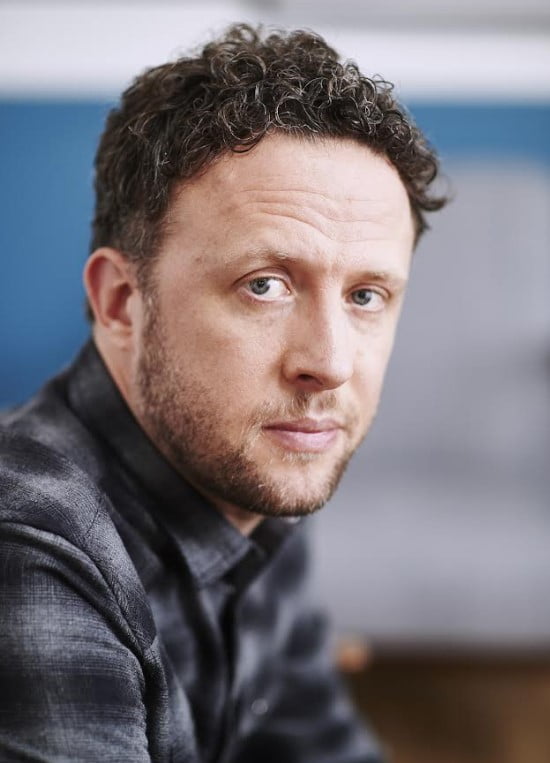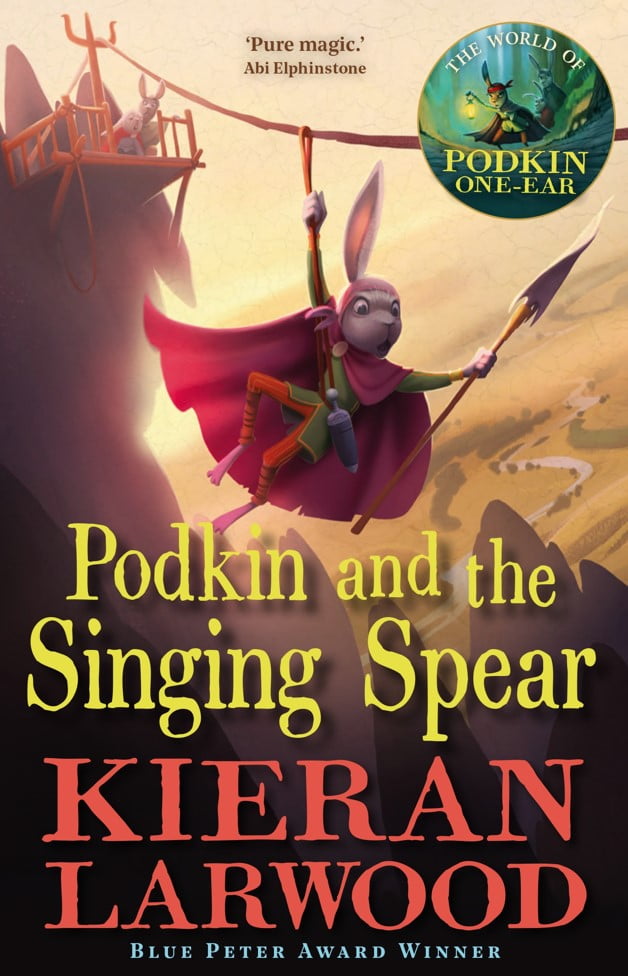As we return to the world of Podkin One-Ear, we’re thrilled to welcome author Kieran Larwood into The Reading Realm to talk about his love of fantasy, how to create memorable characters and how to build believable, breath-taking worlds!

One of my early memories– I was only six years old– was finding a copy of The Hobbit by J.R.R.Tolkien on my parents’ bookshelf. I opened it up, saw the map of Middle Earth, and was lost to fantasy stories from that point on.
I think my favourite thing about the fantasy genre is the way it allows you to escape the real world for a moment, and go on adventures in places that have magic, dragons and monsters. But also– as you follow your favourite characters into awful danger– you get to see how they react to fear, to stress, to grief and it helps us as readers explore our own feelings and know that we aren’t alone. This is especially important for children, I believe, as the adult world can seem very bewildering sometimes.
In order to make this work as a writer, you need to build convincing, vulnerable characters with real flaws and weaknesses. We like reading about heroes with incredible powers, but the thing that makes them believable is their human side and how they struggle with the same worries that affect us. It’s also important to show your characters developing as the story progresses, so it’s a good idea (and lots of fun) to show their bad side at the beginning. We all have one, after all (especially in the morning, before that first cup of coffee, in my case).

It’s not long before Podkin and Uki finally meet – united in their hatred for the world of Scramashank, they have much in common. But what will these young warriors make of each other, and can they work together to unite the forces of good against terrible evil?
In a restless world still under threat, we encounter the terrifying Crowskins, find out whether two rival clans will lay down their differences and how kinship matters more than ever. With stunning illustrations by David Wyatt.
There are several familiar story arcs, or ‘tropes’, in fantasy fiction, and one of my favourite ones is the ‘found family’. I love putting groups of characters together, making them squabble at first and then having them develop bonds as they overcome the odds together. Again, I think this reflects our real-life experiences in school and work, and it’s surprising how emotionally invested you become with these little groups of made-up people (or animals). I often find myself wiping away a tear when I’m writing a touching scene, which is quite embarrassing if you’re working in a coffee shop at the time.
And lastly, if you’re writing fantasy, then you need to spend a large amount of time on an aspect that is almost as important as the characters: building the world.
I do a lot of events where I workshop how to draw a fantasy map, but that is just the beginning. It’s not until you start creating an entire new planet that you realise how complex our own is.
If you want this wondrous place you have built to seem convincing, then the secret is in the details. You need to think up different countries, place names, religions, languages, recipes, costumes, plants, trees, animals, customs, days and months, festivals, traditions… the list is endless.
I tend to spend quite a bit of time working on the world before I even start writing, filling up a ‘bible’ with all the background detail I think I might need. But I also find a lot gets added as the story moves along, so I don’t worry too much about creating entire languages, or family trees that go back thousands of years. I also find it’s useful to use elements of our own history for inspiration, especially the bronze age and medieval periods. Tolkien himself was hugely influenced by Anglo Saxon folklore.
And of course, you then get to add in the best part of fantasy: the magic. This is where you can let your imagination run completely wild, although I try to make my magic systems make some sense (at least to me). I think it makes the unbelievable more believable if there are some rules to it, and also if the incredible powers you are dreaming up have some kind of flaw or weakness to balance them out.
Finally, when you have your characters and your world, you get to put them together and see what happens. It doesn’t always work, but when it does I have just as much fun writing fantasy as I do reading it. The only hard part is having to come back to the real world afterwards.

